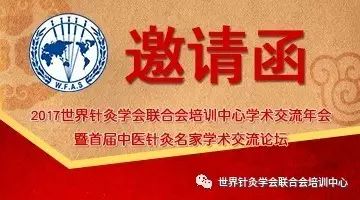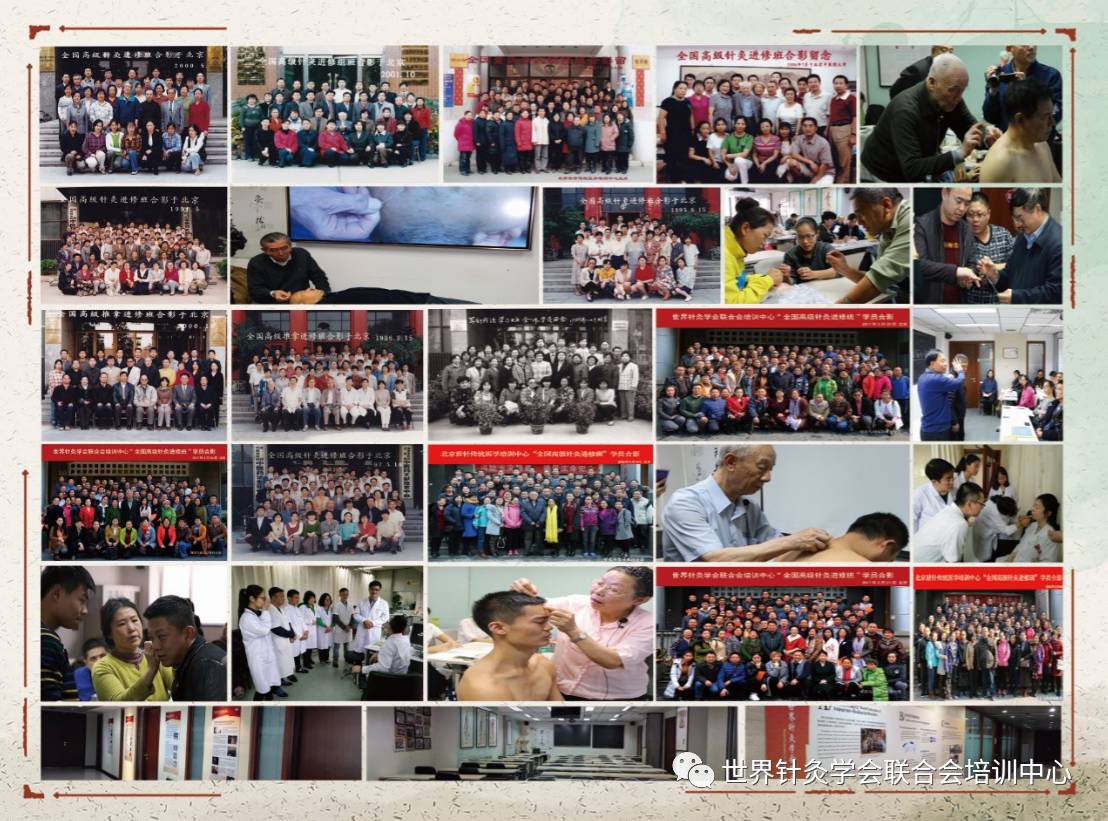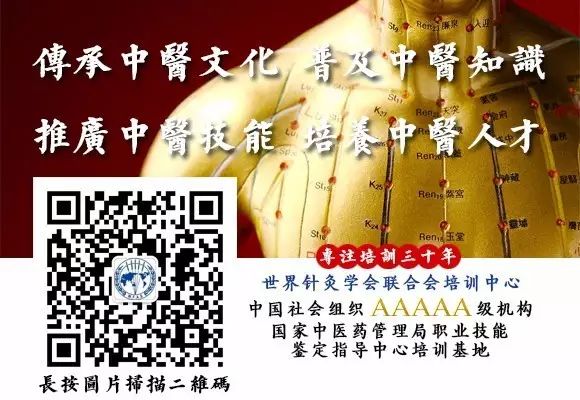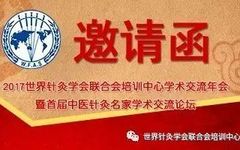
Meridian Diagnosis and Meridian Timing
——Clinical Experience of Chen Zifu

 Author Biography
Author Biography
Chen Zifu, from Tangshan, Hebei, was born inOctober 1935. He entered Beijing University of Chinese Medicine in 1956. After graduating in 1962, he was assigned to work at the Tonghua Mining Bureau in Gulin Province. In 1979, he transferred to Tangshan Traditional Chinese Medicine Hospital, and in 1982, he returned to Beijing. Over more than twenty years of clinical teaching, he has conducted extensive research on meridians and acupoints, authored “Lectures on Meridian Studies” and “Teaching Reference Materials on Meridian Studies” (unpublished), and published over ten papers. He has served as the head of the Meridian Research Office in the Acupuncture and Tuina Department at Beijing University of Chinese Medicine, as an associate professor, and as a council member of the Beijing Acupuncture Society.
1. Academic Characteristics and Medical Expertise1 Advocating Meridian Diagnosis
The method of meridian diagnosis has been recorded since the “Neijing” (Inner Canon). There are more than ten methods such as examination, palpation, following, pressing, tapping, grasping, pulling, and communicating.
The responses of the meridians can be categorized into three types: first, responses such as soreness, numbness, pain, distension, hardness, heaviness, warmth, coolness, blood, swelling, and sinking; second, responses resembling tendons, cords, knots, beads, millet, small hammers, and transverse wood; third, responses of qi movement resembling a crossbow (electrical shock), ant movement, peristalsis, water flow, qi rushing, heat flow, and cool flow. As stated in the “Lingshu: True Evil of Needling”: “Those who use needles must first observe the reality and emptiness of the meridians, palpate and follow them, press and tap them, and observe their responses before selecting and applying them.”
Therefore, following the meridians is an essential method for acupuncturists to diagnose diseases and select acupoints. Chen is skilled in this and has many insights. For example, he treated a 38-year-old male miner who suddenly developed severe pain in his upper front teeth three months prior, with pain that was unrelenting. He had sought treatment from local doctors, but common painkillers were ineffective, and morphine only provided temporary relief. Any exposure to cold air, hot drinks, cold food, or light touch triggered excruciating pain, especially at night. After three days without sleep or food, his face was swollen, and he was in despair. In early February 1966, he sought treatment from Chen at night. Upon examination, his teeth showed no changes, the shape was unchanged, the gums were not swollen, and the tongue was thin, yellow, and greasy. Chen then selected the acupoints of Xiaguan (下关) and Hegu (合谷) for a draining technique, and the pain ceased immediately, allowing him to sleep. After leaving the needles in for half an hour, the pain returned intensely, causing agitation. Chen, at a loss, then followed the five transport points of the hand and foot Yangming meridians and the original points, but found no response. After some thought, he instructed the patient to lie face down and palpated the back shu points, discovering that both sides of the jueyin (厥阴) point were painful like needle pricks; he then needled the Ah Shi point (阿是穴) using the sparrow pecking method, which resulted in a sensation of blood flowing into the teeth, and the pain stopped, allowing the patient to sleep peacefully. After leaving the needles in for an hour, the pain did not return. Chen pondered this case repeatedly, struggling to understand the mystery of the jueyin point causing tooth pain. He inquired further and learned that with the upcoming Spring Festival, the patient was preparing for the holiday and had conflicts with family members, which led to the tooth pain. Chen realized that this was due to the heart governing the spirit and acting on its orders. Another case involved a 30-year-old female patient with long-standing epigastric pain. Each episode was relieved by oral or injected antispasmodic painkillers, but the pain recurred. A barium swallow revealed a diagnosis of “gastric spasm.” The patient was robust but irritable, and her stomach pain would flare with emotional changes. On the night of her visit, she experienced severe epigastric pain, moaning continuously, with a pale red tongue and little coating, and a wiry, slightly rapid pulse, diagnosed as liver qi stagnation with spleen deficiency leading to accumulation of Yangming meridian qi, causing obstruction and pain. Thus, Chen selected the foot jueyin and foot Yangming meridians for diagnosis, adhering to the principle of “combined treatment of the internal organs,” and examined the yin-yang combined acupoints. He found that Taichong (太冲) had a response resembling a knot, Zusanli (足三里) had a response indicating sinking, and Yanglingquan (阳陵泉) also indicated sinking. Upon palpating the back shu points, there were no responses in the liver, spleen, or stomach points, but the diaphragm point had a response resembling a tendon, which was painful upon needling. Chen speculated that blood was accumulating at the diaphragm point, possibly due to prolonged pain affecting the stomach’s network, and upon further inquiry, the patient indicated that the most intense pain was below the xiphoid process, clarifying that it was not due to blood network injury but rather because the pain had reached the diaphragm, causing qi counterflow and nausea. Therefore, he aimed to soothe the jueyin and open the Yangming, using Yang to guide Yin and descend the counterflow, first opening the four gates, then needling the diaphragm point, which alleviated the pain. He then selected Yanglingquan and Zusanli to maintain the effect. After one session, the pain disappeared, and she did not experience a recurrence that summer or autumn.
2 Proficient in Needle Penetration, Dispelling Wind and Alleviating Pain
Chen believes that the principle of “drawing Yin from Yang and drawing Yang from Yin” is essential for acupuncturists in differentiating and selecting acupoints. However, if one needle can access two acupoints, and one acupoint penetrates two meridians, both Yin and Yang are obtained, and the qi flows smoothly, the effect will be rapid. Here is a brief example: A patient, Xue XX, a 68-year-old retired worker, reported that after drinking alcohol the previous night, he woke up to find his left side paralyzed and was urgently sent to the hospital’s acupuncture department for treatment. The patient was elderly, tall, and healthy, with a rosy complexion and well-developed muscles, clear consciousness, and fluent speech. The left corner of his mouth was slightly drooping to the right, the nasolabial fold was shallow, and he could not close his left eye, with the wrinkles on his left forehead disappeared. His left upper and lower limbs were weak and flaccid. The tongue was pale red with little coating, and the pulse was deep, wiry, and strong. The diagnosis was stroke. Although the patient appeared robust, his kidney qi had declined with age, and Yang qi was deficient, making it difficult to promote blood circulation, leading to blood stagnation in the meridians. The treatment should focus on tonifying qi and promoting blood circulation, warming the meridians, and dispelling wind. Acupuncture was applied to Baihui (百会), Qihai (气海), and Guanyuan (关元); needling Xuehai (血海, bilateral) and Zusanli (足三里, bilateral); facial points included Yangbai (阳白) penetrating Yuyao (鱼腰), Sibai (四白) penetrating Yingxiang (迎香), Jiachuan (颊车) penetrating Dicang (地仓), upper limb points included Jianyu (肩髃) penetrating Arm (臂臑), Quchi (曲池) penetrating Shaohai (少海), Waiguan (外关) penetrating Neiguan (内关), and Hegu (合谷) penetrating Houxi (后溪); lower limb points included Huantiao (环跳) penetrating Changqiang (长强), Fengshi (风市) penetrating Yinmen (阴门), Yanglingquan (阳陵泉) penetrating Yinlingquan (阴陵泉), Xuanzhong (悬钟) penetrating Sanyinjiao (三阴交), and Kunlun (昆仑) penetrating Taixi (太溪). After one acupuncture session, he was able to walk and care for himself after a month.
3 Advocating Meridian Timing
Chen has grasped the essence of the Dan Yutang (单玉堂) flow needle technique and, under its guidance, summarized it into the manuscript “Ziwu Liuzhu Xun Gu.” After more than twenty years of in-depth research on this classical acupuncture technique, Chen has summarized the “Three Essential Principles of Dan’s Flowing Acupuncture”:
(1) Carefully assess the disease and correspond with the timing: The Ziwu Liuzhu acupuncture method has two types of acupoint selection: one is based on regular timing; the other is based on clinical differentiation. Regular acupoint selection follows the textbook method, calculating the time and using the Jia method to determine the acupoints according to the “Xu’s Ziwu Liuzhu Timing Acupoint Method.” However, simply following the regular method cannot treat all diseases. Therefore, it is essential to “carefully assess the disease and correspond with the timing,” meaning that differentiation must be combined with the timing of acupoint selection. “Carefully assess” has two meanings: one is to be cautious and meticulous, meaning that differentiation must be accurate and careful; the other is to adhere strictly to the principles of differentiation and examine the disease situation. The method of “corresponding with the timing” has two aspects: one is to “carefully wait for the right time, when the qi can correspond,” meaning that after differentiation, wait for the appropriate timing acupoint to open for treatment; the other is to select the appropriate timing acupoint based on the original acupoint selection after differentiation. Therefore, Ziwu Liuzhu acupuncture does not contradict the principles of differentiation and treatment but is very flexible in selecting timing acupoints based on differentiation.
The Jia method, also known as the Gan method, can be used in clinical differentiation to select timing acupoints based on the disease situation. After differentiating the meridians, acupoints are selected according to the rules of meridian flow, opening Yang acupoints during Yang days and Yang hours, and Yin acupoints during Yin days and Yin hours; meridians give rise to meridians, and acupoints give rise to acupoints, opening one or several layers of the five transport acupoints of the meridian corresponding to the day. Additionally, according to the five movements, the Jia and Ji combine, Yi and Geng combine, Bing and Xin combine, Ding and Ren combine, and Wu and Gui combine, selecting acupoints that harmonize Yin and Yang, achieving a balance of hardness and softness. For example, on a Jia Xu day, the Gallbladder Jing (胆井) acupoint is selected, which belongs to the Metal acupoint; if there is a spleen dysfunction, the Spleen Metal acupoint Shangqiu (商丘) is also selected, achieving the effect of harmonizing qi and blood. Furthermore, the Lung corresponds to the Large Intestine, the Heart corresponds to the Small Intestine, the Spleen corresponds to the Stomach, the Liver corresponds to the Gallbladder, the Kidney corresponds to the Bladder, and the Pericardium corresponds to the Sanjiao, thus selecting the same five transport acupoints of the corresponding meridians. On a Jia Xu day, the Gallbladder Jing acupoint is selected, and if there is a Liver meridian disease, the Liver Jing Dazun (大敦) is also selected, known as the method of selecting acupoints that correspond to each other.
According to the rules of the five movements and the combination of Yin and Yang, Jia and Ji are considered combined days, Yi and Geng are combined days, Bing and Xin are combined days, Ding and Ren are combined days, and Wu and Gui are combined days. Based on this, the transport acupoints of the combined days can be used interchangeably, known as the method of interchangeable acupoint selection on combined days. Additionally, acupoints can be selected based on the disease’s needs to match the timing acupoints, known as the method of selecting disease acupoints to match timing acupoints.
The Jia method, also known as the Zhi method, can be used in clinical differentiation to select timing acupoints based on the relationship between the Yin and Yang of the organs. For example, when opening the original acupoint of the Lung meridian, the Luo acupoint of the Large Intestine meridian can be selected simultaneously. This method is known as the method of selecting acupoints based on the communication between organs. In clinical practice, the Linggui Eight Methods are often used in conjunction with the Jia method or the Zhi method. Depending on the patient’s condition, the eight methods’ timing acupoints can be opened first, followed by the timing acupoints selected by the Jia method, known as the method of combining the eight methods with the Jia method. If the timing acupoints selected by the Zhi method are used, it is called the method of combining the eight methods with the Zhi method. There are also methods such as the eight methods combined with the original acupoint selection, the eight methods combined with the five transport acupoints for disease selection, the eight methods combined with acupoint selection, the eight methods combined with the Yin and Yang intersection acupoint selection, the eight methods combined with the interchangeable acupoint selection on combined days, and the eight methods combined with disease timing acupoint selection, etc., making the clinical application flexible and varied.
(2) Opening acupoints at closed times, in accordance with the heavenly timing: In the “Ziwu Liuzhu Circular Diagram,” there are twelve time periods in a week where no acupoints can be opened; in another week, there are also twelve time periods where no acupoints can be opened, referred to as closed times. Historically, Ziwu Liuzhu acupuncturists have referred to this as a “natural defect.” Later generations have attempted various methods to open these closed times to seek acupoints, but these methods are often not effective and somewhat forced. Dan’s method follows the heavenly timing, creating the “142530” method for opening acupoints at closed times, appropriately supplementing the twenty-four closed time acupoints, marking that the flow of qi and blood in the human body has no end time, which is recognized by contemporary practitioners. Chen follows his teacher’s teachings, based on the “Suwen: Six Qi and Organ Manifestations” which states: “Heaven uses six as a cycle, with ten days, six days complete a cycle, and six cycles complete a year, totaling three hundred sixty days.” Excluding the sixty cycles of the heavenly stems and branches, seeking the Jia day, the short and mutual overcoming is the source of pre-heaven, while mutual generation is the source of post-heaven. However, upon careful examination of the “Ziwu Liuzhu Circular Diagram,” the sequence of “142530” does not follow heavenly timing but rather goes against it. If following the “establishing the Jia and determining the movement” theory, in accordance with heavenly timing, it should start from Jiazi, and the sequence of Jia days should be “410352.” However, the timing acupoints opened during closed times are the same as those of “142530.” If further examined, the sequence of “142530” should be the sequence of the intersection of Yin and Yang, but this sequence has “Xunkong” (旬空) in it, causing the loss of acupoints in sequence, which occurs when encountering Gui, as Gui rises at the Hai time. Thus, Dan has completed the opening of acupoints during closed times on the “Ziwu Liuzhu Circular Diagram.”
(3) Supplementing and draining as needed: The principles of welcoming and following are the essence of Ziwu Liuzhu. In practice, this is the transmission of the essence of the “Neijing,” where following the direction of qi and blood flow in the meridians, welcoming and seizing is called draining, while following and assisting is called supplementing. Specific techniques include twisting, lifting, inserting, breathing, and varying speeds. The ancient methods divided into male and female, but this is often not used today. Some determine the direction of welcoming and following based on the needle’s direction, while others determine it based on the direction of the thumb of the hand holding the needle, but it is essential to distinguish between Yin and Yang meridians.
The eight extraordinary meridian meeting points have a wide range of clinical applications, as noted in the book “Guidelines for Acupuncture Classics.” Therefore, when encountering a disease, one can first open the timing acupoints of the eight methods (referring to Linggui) and then, based on the disease’s needs (differentiation), open the acupoints used in the Jia method. For example, on a Jia Xu day at Jia Xu time, first open the eight methods’ Houxi and Shenmai acupoints to treat floating pulse, cough, chills, fever, and abdominal pain, while if there is fullness under the heart, the hand Taiyin Jing (少商) and foot Taiyin Jing (隐白) acupoints can be added; if there is a fever, the hand and foot Taiyin Ying (鱼际) and Dadu (大都) acupoints can be added; if there is cough with chills and fever, the hand and foot Taiyin Jing (经渠) and Shangqiu (商丘) acupoints can be added; if there is counterflow qi and diarrhea, the hand and foot Taiyin He (尺泽) and Yinlingquan (阴陵泉) acupoints can be added. In addition, if there are original acupoints that treat symptoms, they can be added; if there are Luo acupoints that treat symptoms, they can be added; if there are corresponding acupoints that treat symptoms, they can be added, etc. The methods are flexible, and the key lies in the accuracy of differentiation and meridian division.
2. Selected Medical Cases
Case 1: Facial Muscle Spasm
Wang X, male, 54 years old, miner, first diagnosed in July 1970.
The patient had left-sided facial muscle spasms for over ten years, with facial twitching, the left eye opening and closing intermittently, and the left corner of the mouth rising and falling. The patient was thin and weak, having sought various treatments without success, and thus turned to acupuncture. The diagnosis was internal wind movement due to deficiency, ascending to the face.
Prescription: Right Hegu (合谷), Jiachuan (颊车), Sibai (四白), Yangbai (阳白), Yifeng (翳风).
Treatment process: Using the large needle technique, treatment lasted for three months without effect. Chen then followed the hand and foot Yangming meridians, finding a response of soreness and pain at the left arm’s Shousanli (手三里); he also followed the hand Shaoyang and Taiyang meridians, finding no response below the elbow. Following the back shu points, he found no response, but at the Tianzong (天宗) point, there was a response resembling a knot and soreness. He then needled the above two responsive points, adding the same side’s Hegu and Waiguan (外关). After two months of treatment, the episodes gradually lessened and eventually resolved.
Case 2: Migraine
Guo XX, female, 43 years old, office worker, first diagnosed in October 1965.
She reported that two years prior, after a disagreement with a family member, she developed left-sided migraines that gradually worsened. After two months of ineffective painkillers, she took a leave of absence. For nearly two years, each episode was so painful that she felt she might die. Upon examination, her complexion was slightly dark, with cupping marks on her forehead, a thin yellow tongue coating, a red tip, and a wiry, slightly rapid pulse. The diagnosis was long-standing liver qi stagnation transforming into fire, affecting the Shaoyang. The treatment aimed to drain the liver, benefit the gallbladder, regulate qi, and relieve pain.
Prescription: Taichong (太冲), Zuliqiao (足临泣), Yangbai (阳白), Fengchi (风池), Hegu (合谷).
Treatment process: After more than a month of treatment, each needle was light, but the pain returned after needling. Chen then followed the head and face, discovering a response at the Touwei (头维) point, which was sunken and sore; he also followed the back shu points, finding responses at the diaphragm and gallbladder points resembling tendons and sharp pain; further examination below the elbow revealed no findings, but below the knee, the Zhaohai (照海) point was knotty and very sore. He then selected the above responsive points in conjunction with the differentiation points, all using draining techniques. After more than three months of treatment, the frequency of headaches decreased, and the condition improved, leading to a complete recovery, with no recurrence after one year of follow-up.
Case 3: Urinary Retention
Hu XX, male, 82 years old, retired worker, first diagnosed in mid-September 1972.
The patient was hospitalized for two months due to liver cirrhosis and ascites, suffering from “urinary retention,” and requested a consultation from the TCM department. The patient appeared with a yellowish complexion, lacking luster, thin cheeks, a slender neck, half-sitting in bed, and a lethargic spirit. Upon examination, his abdomen was distended like a drum but still soft. The lower abdomen was significantly enlarged, and upon palpation, the bladder felt full and clear at the edges. The tongue was smooth and peeled with no coating, purple-brown in color; the pulse was deep, thin, and slightly choppy. The water retention was due to liver blood stagnation, which over time transformed into fire, consuming the essence and fluids, leading to kidney water depletion. The deficiency of the spleen caused water and dampness to be improperly processed, leading to ascites; the urinary retention was due to age-related kidney qi deficiency and poor qi transformation.
Treatment method: As it was urgent, the focus was on treating the symptoms, thus acupuncture and herbal medicine were used to promote urination.
Prescription: Modified Zhenwu (真武) and Wuling (五苓) decoction to promote Yang and benefit water; acupuncture at Taixi (太溪), Fuliu (复溜), and Yinlingquan (阴陵泉) (supplementing method); and manual pressure on Guanyuan (关元) and Zhongji (中极).
Treatment process: After about five minutes of acupuncture and manual pressure, urine began to flow continuously until it was completely drained. Following this, acupuncture was performed daily, resulting in passive urination. After several days, the patient was able to urinate independently. After more than forty days of combined treatment, the ascites resolved significantly, and the patient was able to walk slowly. Further treatment continued for three months before discharge for recuperation.
Annual Meeting Notification
2017 World Acupuncture Society Training Center Academic Exchange Annual Meeting and the First Academic Exchange Forum of Renowned TCM Acupuncture Experts
Click the image to view the meeting content:

Meeting and Membership Registration (Click this link)
Thirty Years Review of the National Advanced Acupuncture Training Class
Part of the Training Center Faculty:




Read and Reflect
duersi
Not to be a good minister, but to be a good doctor. — Shao Dengying, “Four Seasons Pathology”
▶【Unauthorized reproduction, excerpting, copying, or establishing mirrors is prohibited. For reprints, please apply through the official account and obtain permission. If there is any infringement, please contact us for deletion.】

Key Sections · Click the title to enter
Faculty Introduction Training Highlights Enrollment Guidelines Live Broadcast Entry
Video Website Previous Articles Micro Website
If you find this useful, please share and like. To participate in learning, please click the original link.

